In the wonderful English translation of the first volume of the Zodiaque series “La Nuit des Temps”, Paul Veyriras writes, “At Autun, we are confronted with medieval Christian spirituality in its full splendour. The humility of Autun, its pure and childish charm are so typically Christian that they never were and never will be equaled.”
The Burgundian Cathédrale Saint Lazare in Autun was built to house the vererated relics of Lazarus of Aix, which were believed to be those of Lazarus of Bethany, the companion of Christ. These relics came into the possession of the Cathédrale Saint Nazaire in Autun in the 9th century, and on the orders of the bishop, the new cathedral was built to house them in 1120-1146.
Because of extensive repairs in the 15th century, the exterior of the church that we see today is mostly Gothic, but the interior remains almost pure Romanesque. In the nave we see the influence of the the Abbey of Cluny in the vaulting – a banded barrel vault with ogive arches.
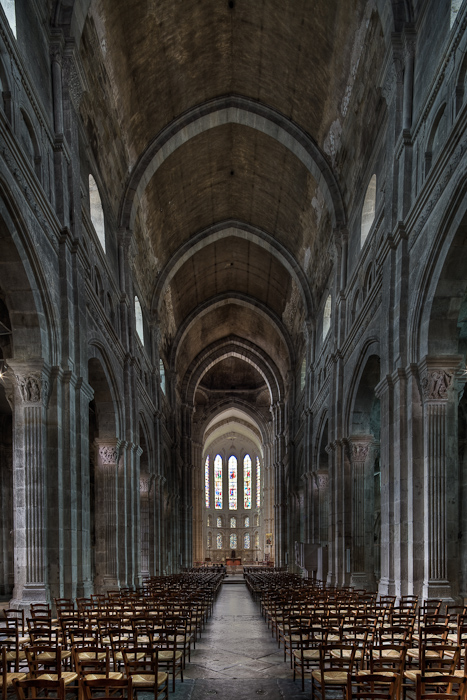
The nave elevation shows the high pointed arches of the arcades, a beautiful figured cornice surmounted by a triple-arched triforium, and clerestory windows. The triforium features a central open arch and two blind arches in each bay. On the nave side of the powerful arcade pillars, engaged pilasters lead the eye upwards to the transverse ribs for the vault.
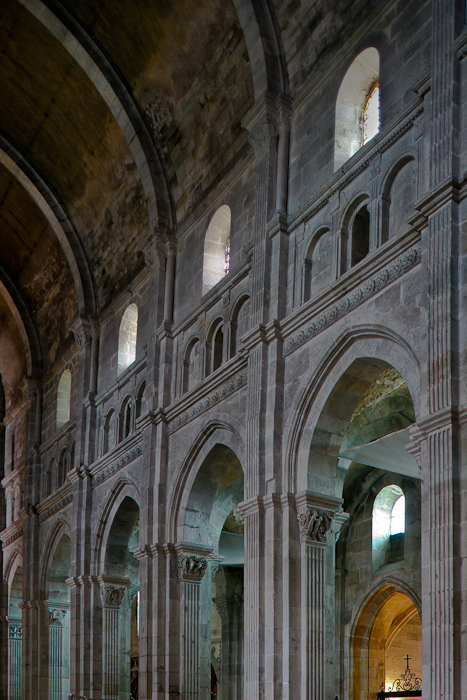
The choir is a mixture of Romanesque and Gothic – the lower parts are Romanesque while the upper section, including the stained glass windows. are from the 15th century. There is no ambulatory with radiating chapels, however – the side aisles end in chapels on either side of the choir.
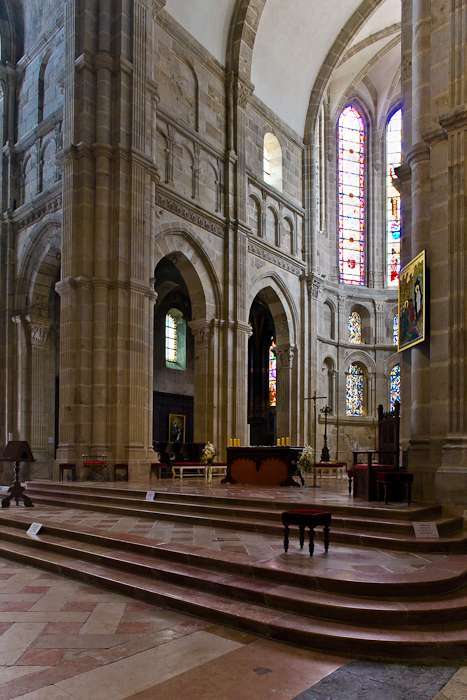
In the lovely groin-vaulted side aisles, we can see the pillars topped with the superb capitals that are the pride of Saint Lazare. We can also see nets suspended in the distance, used to protect visitors from falling masonry in sections that require restoration.
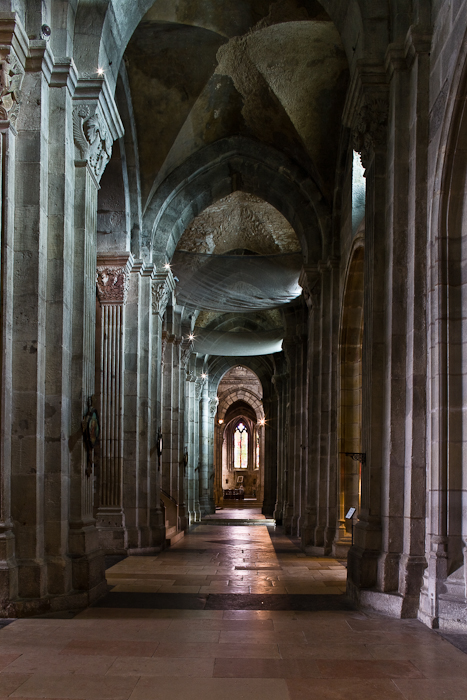
The side chapels are 15th century, but fit beautifully into the church as a whole. These were probably constructed to compensate for the lack of radiating chapels in the apse.
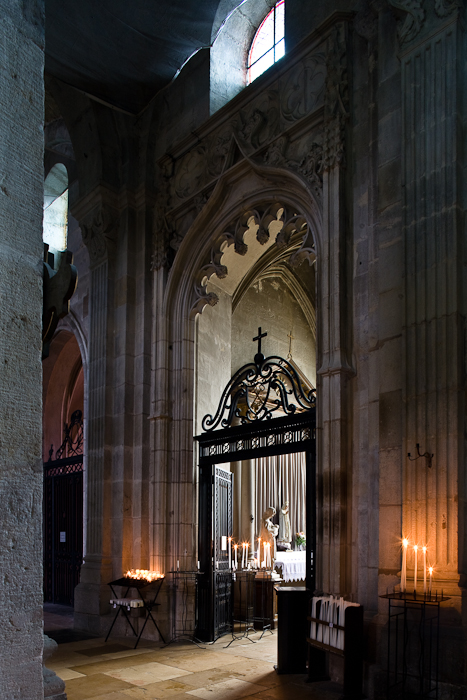
This part of Burgundy is rich in churches with fine capitals – Vézelay and Saulieu come immediately to mind – but Autun is justly famous for its interior sculpture. The “Simon Magus” capital is a dramatic depiction of the sorcerer falling to earth.
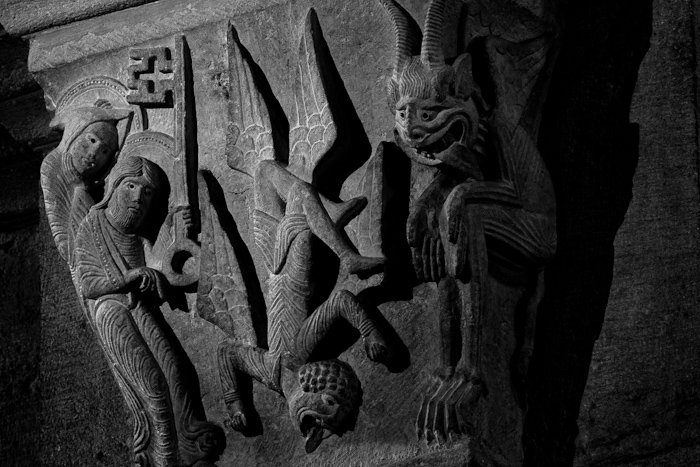
The story of Sampson slaying the lion is illustrated on another capital in the nave. The carving of the lion’s mane is simply breathtaking.
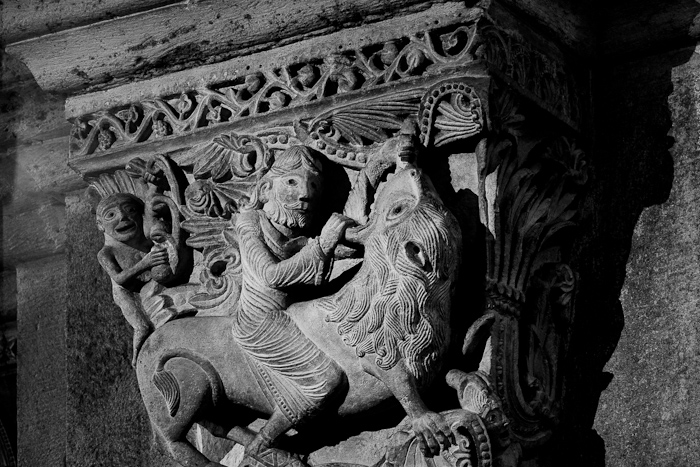
Perhaps the most famous capital in Saint Lazare is the Flight to Egypt, showing Joseph leading the ass carrying Mary and Jesus. In this, as in so many others in this ensemble, the carving is rich and bold and filled with narrative life.
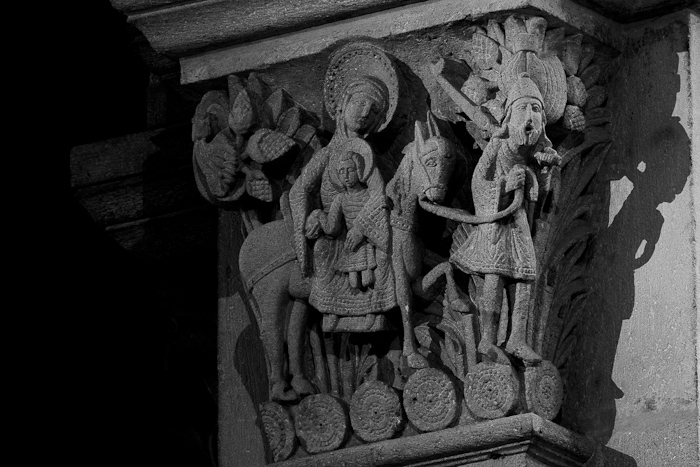
As magnificent as the interior sculptures may be, the west portal preserves one of the undoubted masterpieces of Romanesque art – the “Giselbertus” tympanum.
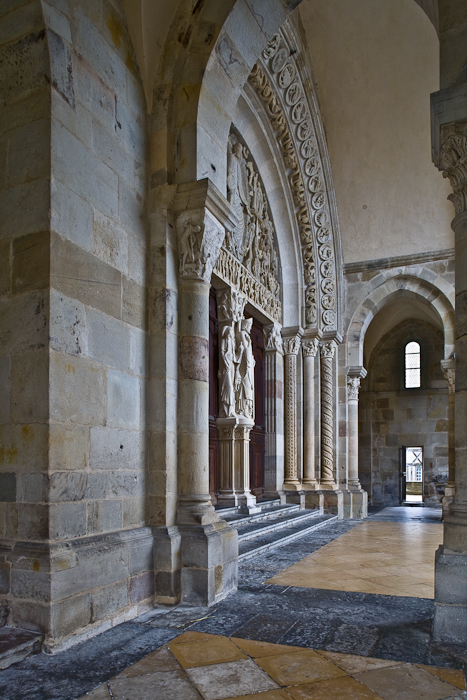
The tympanum of Cathédrale Saint Lazare in Autun is a supreme accomplishment of medieval sculpture and has the additional caché of having what many believe is the artist’s signature, Gislebertus hoc fecit directly below the Christ figure. Some scholars (Linda Seidel, “Legends in Limestone: Lazarus, Gislebertus, and the Cathedral of Autun”) believe that this inscription refers not to the artist, but to the patron who financed the tympanum. This is probably a reaction against 20th Century art historians who professed to see a whole oeuvre of work throughout France that was created by the same hand that sculpted this tympanum. Whatever the truth of Gislebertus, there is no doubt as to the genius and inspiration of the creator.
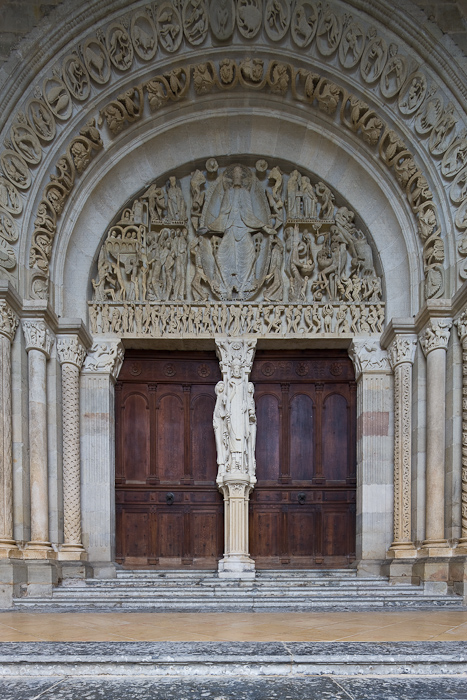
Paul Veyriras concludes his description of Autun with, “Not that it is impossible to find more admirable works of art, but none was create with the same apparently unconscious ease, the same stupendous, unrivaled simplicity, even though the spirit of Autun lives in it.”
The spirit of Autun does live on in the cathedral. It is a pure expression of medieval Christianity, by turns naive and sophisticated, filled simultaneously with grandeur and humility. It is beyond our modern consciousness to understand how these traits can co-exist harmoniously in a building. We can only acknowledge that they do and gaze in wonder.
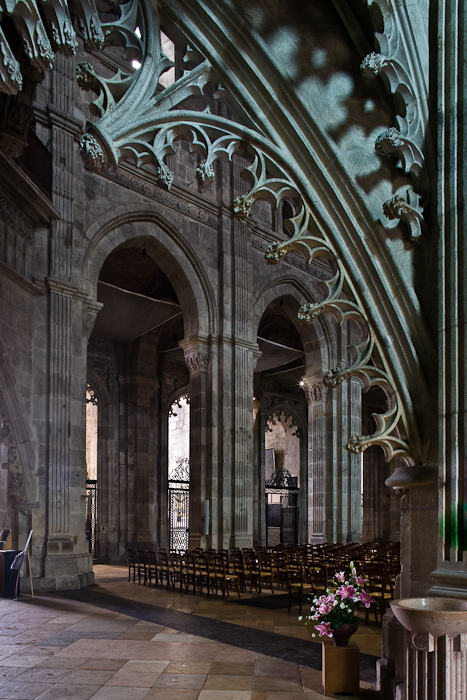
Location: 46.945027° 4.299004°

Nice photography !!!… Look like a Historical place.
As ever, stunning photography, and it was great having a tour around this edifice..
Thank you. Saint Lazare is one of our favorite churches.
Of all the Romanesque masterpieces, none speaks the language of the Roman architecture more vividly than Saint Lazare, Autun. The compound piers of fluted pilasters are unlike any other anywhere. Your wonderful photo homage to Autun was long overdue. Jong-Soung
Thank you, Jong-Soung. Didn’t you visit last year?
I love those compound piers with the pilasters, by the way. It seems like the Roman remains in the area were an inspiration to the builders.
Yes, Dennis,
I paid a return visit to Autun in spring, last year, had the good fortune of sunny weather to photograph the Cathedral to my heart’s content. Jong-Soung
GISLEBERTUS HOC FECIT.
I get chills whenever I see the tympanum. For my mini-thesis for a capstone course I took in my final year at Brandeis, I discussed how Autun’s architectural style and sculptural program epitomize the Romanesque style. And of course, I read Seidel’s book; she does make a convincing argument. However, I think the romanticist in me refuses to believe that Gislebertus was the name of some feudal lord who gave land to the church; there is something purely audacious, dare I say arrogant about signing one’s name at the feet of Christ, on the front of a great cathedral, which goes beyond the equivalent of putting a donor’s plaque on the wall. I picture Gislebertus rising from the title of mere craftsman to master sculptor, planting his name at Autun not unlike Michelangelo placing himself at the center of the Sistine Ceiling fresco in the Vatican. The masters all had big egos, and deservedly so.
And there are many examples of artists signing their names – Gofridus in Chauvigny, Me Fecit Isembardvs at Bernay, or Robertus me fecit at Notre Dame du Port in Clermont Ferrand. To me, Seidel’s argument is strong, but not convincing. The Isembardus capital, for example, is high and remote, and certainly not easily readable. It is the equivalent of a sponsor at Fenway Park sporting a tiny sign hidden out of sight.
Dennis: How I would so loved to have seen the sculpture at Autun when in France. It would be wonderful to return, but not really possible. Meantime almost every day I enjoy your beautiful photographs and sensitive writing. Thank you so much.
Some day you may return – just think of all the wonderful places you will be able to see, Kalli. We’re glad that you enjoy our work, though, and are part of the Via Lucis world.
Totally stunning 🙂
Wow, the stone sculpture here is mind-blowing. Your photo of the stone lace trimming of the nave arcade is fantastic. Do you know how a sculptor made a tympanum? Was it carved on site, in the entrance, or sculpted elsewhere and brought to the church, then stood up?
Trish, I don’t know if the tympanum was carved in situ. I imagine not, however.